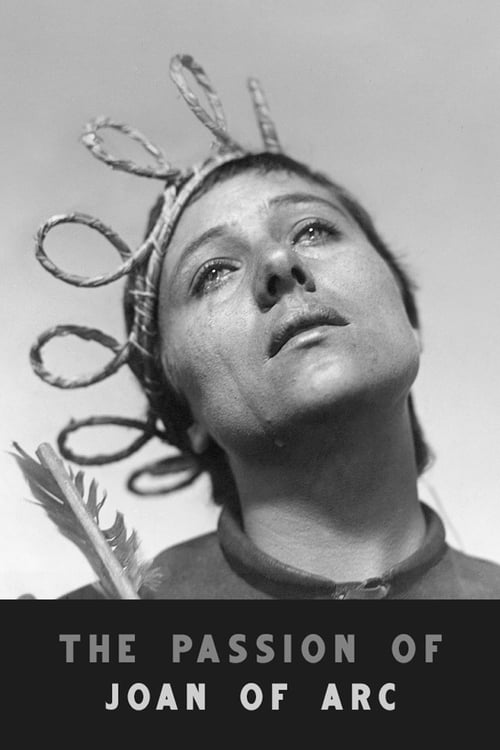
The Passion of Joan of Arc
The year is 1431. Stone walls cast long, unforgiving shadows as Jeanne d’Arc, barely a woman, stands accused of heresy. Whispers echo through the halls – a peasant girl claiming divine visions, leading armies against the English. Bishop Pierre Cauchon, his face a mask of pious disapproval, orchestrates the trial, determined to break her spirit. Jean d’Estivet, the prosecutor, sharpens his words like a blade, twisting Jeanne’s faith into blasphemy. Nicolas Loyseleur, a supposed friend, feigns compassion, seeking only to extract a confession. Each day, under the relentless interrogation of Jean Massieu and the court, Jeanne’s resolve is tested, her belief in her divine mission pitted against the mortal fear of the stake. The fate of France, perhaps even of faith itself, hangs in the balance, resting on the shoulders of a young woman and the unwavering conviction in her heart.

Movie Overview
| Title | The Passion of Joan of Arc |
|---|---|
| Release Date | 1928-04-21 |
| Runtime | 82 minutes |
| Genre | Drama, History |
Movie Cast
| Name | Character |
|---|---|
| Maria Falconetti | Jeanne d’Arc |
| Eugène Silvain | Bishop Pierre Cauchon |
| André Berley | Jean d’Estivet |
| Maurice Schutz | Nicolas Loyseleur |
| Antonin Artaud | Jean Massieu |
| Michel Simon | Jean Lemaître |
| Jean d’Yd | Guillaume Evrard |
| Louis Ravet | Jean Beaupère |
| Armand Lurville | Judge |
| Jacques Arnna | Judge |
| Alexandre Mihalesco | Judge |
| Léon Larive | Judge |
| Jean Aymé | Judge (uncredited) |
| Gilbert Dacheux | Judge (uncredited) |
| Gilbert Dalleu | Jean Lemaître (uncredited) |
| Paul Delauzac | Martin Ladvenu (uncredited) |
| Dimitri Dimitriev | Judge (uncredited) |
| Fournez-Goffard | Judge (uncredited) |
| Henri Gaultier | Judge (uncredited) |
| Paul Jorge | Judge (uncredited) |
| Marie Lacroix | Woman Looking at the Stake (uncredited) |
| Henri Maillard | Judge (uncredited) |
| Raymond Narlay | Judge (uncredited) |
Storyline
In 15th-century France, the unwavering faith of Jeanne d’Arc, portrayed with raw intensity by Maria Falconetti, becomes her tragic downfall. Arrested and subjected to relentless interrogation by the Church court, Joan is isolated within the cold, unforgiving stone walls. Bishop Pierre Cauchon, a calculating and ambitious figure, leads the prosecution, skillfully manipulating the court and public opinion against her. Jean d’Estivet, driven by religious zealotry, serves as Cauchon’s ruthless enforcer, twisting Joan’s words and beliefs to paint her as a heretic. Amidst the oppressive atmosphere, Nicolas Loyseleur, a conflicted priest, feigns sympathy to gain Joan’s trust, secretly reporting her confessions back to the court, further betraying her vulnerability. As the trial progresses, the psychological torment intensifies, with Joan facing constant pressure to recant her claims of divine communication. Despite her initial wavering, influenced by Loyseleur’s deceit, Joan ultimately finds the strength to embrace her truth, refusing to deny her faith. This defiance seals her fate, leading to a brutal execution that solidifies her status as a martyr, her unwavering conviction echoing long after the flames have died, remembered by Jean Massieu and the people.
Details
In Carl Theodor Dreyer’s harrowing silent masterpiece, The Passion of Joan of Arc, the young and resolute Jeanne d’Arc, portrayed with raw emotion by Maria Falconetti, faces a relentless and unjust trial for heresy in 15th-century France. Accused of claiming divine communication, she is subjected to psychological torment and physical deprivation by a panel of callous church officials, led by the manipulative Bishop Pierre Cauchon. Confined within the cold, stark walls of her prison, Jeanne endures relentless questioning and intimidation tactics designed to break her spirit and force her to recant her claims. As the trial progresses, figures like Jean d’Estivet, a stern and unforgiving prosecutor, further amplify the pressure on Jeanne, while even confessors like Nicolas Loyseleur struggle with the moral implications of their roles in her ordeal. The film meticulously documents Jeanne’s agonizing journey, capturing her unwavering faith amidst mounting despair, and culminates in a brutal execution that solidifies her status as a martyr. Antonin Artaud as Jean Massieu adds a layer of quiet compassion as a monk observing the cruelty, highlighting the deep themes of faith, injustice, and the individual’s struggle against oppressive power.
FAQs
“`html
What is “The Passion of Joan of Arc” about?
The film depicts the trial and execution of Joan of Arc, a 15th-century French peasant girl who claimed to have divine visions and led the French army to victory.
When was “The Passion of Joan of Arc” released?
The movie was released on April 21, 1928.
Who directed “The Passion of Joan of Arc”?
Carl Theodor Dreyer directed the film.
Who played Joan of Arc in the film?
Maria Falconetti played the role of Joan of Arc.
What genre is “The Passion of Joan of Arc”?
The movie is classified as Drama and History.
Is “The Passion of Joan of Arc” a silent film?
Yes, it is a classic of the silent film era.
What language is “The Passion of Joan of Arc” in?
The film is primarily a silent film with minimal language, considered “No Language”.
Where was “The Passion of Joan of Arc” produced?
The film was produced in France.
What is the runtime of “The Passion of Joan of Arc”?
The runtime of the movie is 82 minutes.
Is “The Passion of Joan of Arc” based on historical events?
Yes, it is based on the historical trial and execution of Joan of Arc.
“`



